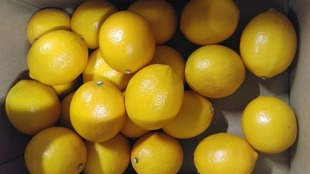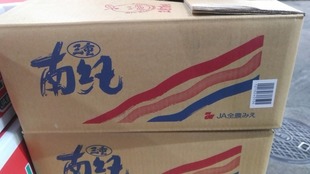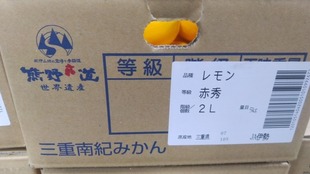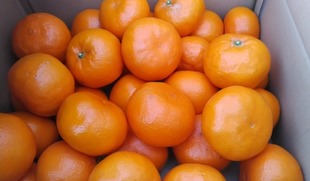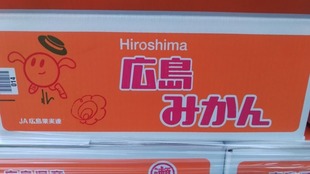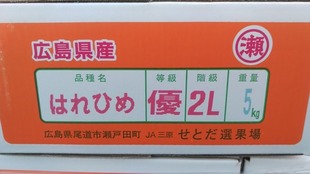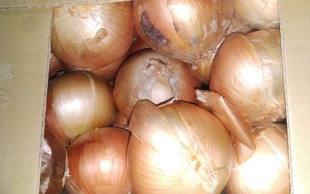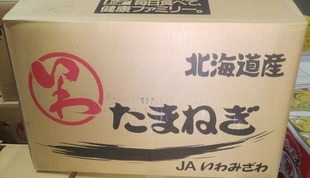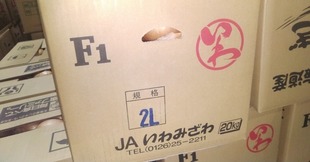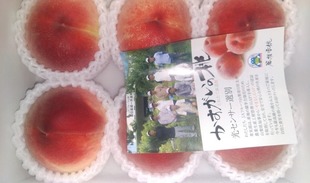【Product name】
Maitake mushroom(Shinshu Nakano)
【Type】
Grifola frondosa (Dicks.) Gray
【Producing area】
Nakano City, Nagano Prefecture (JA Nakano City, JA Zen-Noh Nagano)
【Origin of name】
I heard that it was named as a mushroom with a rare value that makes the person who found it soar and appreciate it.
【Major features】
From the end of the Edo period to the Meiji era, clay dolls (Nakano) were deeply rooted in the lives of ordinary people all over the country, and the wisdom, sayings, and lessons contained in the dolls became the culture of many children in Japan. It has played a major role in the formation of the human mind. In Nakano City, the “Nakano Doll” produced by the Nara family and the “Tategahana Doll” produced by the Nishihara family (in the mid-1897s, at that time, Nishihara’s work (first generation) was Angenji in Nakano City. It seems that they were manufacturing roof tiles in the temple area. It is said that Umesaburo Saito (real name: Umetaro), a gargoyle craftsman in Mikawa, Aichi Prefecture, made clay dolls as a side job during the winter season.) ” , These are collectively called “Nakano clay doll”. It is rare in Japan that two lines with different processes and characteristics from the place of origin are produced in the same area using traditional traditional techniques, which seems to be the reason why Nakano City is called “Clay Doll Village”. The spring something characteristic of a particular season “Nakano Doll City” in Kita Shinshu, which is visited by jar doll lovers nationwide, is scheduled to be held on March 31st (Thursday) and April 1st (Friday), 2022. It seems that the purchasers of Nakano Dobina will be decided by a preliminary lottery this year as well to prevent infection. 舞茸 : It has been time-consuming to collect and has been prized since ancient times. It is rich and has a delicious flavor. Light is essential for Maitake mushrooms cultivation. Generally, a fluorescent lamp installed on the ceiling is used. Discovered from research that LED(発光ダイオード: light emitting diode; Invented by Nick Holoniac, Jr. in 1962 : Red color)s can be used for maitake mushrooms cultivation as an alternative to fluorescent lights. Therefore, it is expected to contribute to the cost reduction of producers and the stabilization of management. Widely used for cooking and high in nutritional value. Tempura, vinegared food, seasoned, grilled, simmered, stir-fried, fried, soup, cooked rice, etc. Ingredients that make your heart love to your important person. Please recover quickly with enough nutrition and sleep. It is said that it was named Maitake mushrooms because of its deliciousness that makes you want to dance. It features an umbrella that looks like a petal, and the one with good freshness has a crisp tension on the umbrella. It seems that the stem part with a crispy texture is also preferred in the production area. It is clear that it is rich in β-glucan and vitamin D, which have the function of boosting immunity. In early autumn 2019, four mushroom producers in Nakano City, including K-AI Ogiwara (Nakano City, Nagano Prefecture: Saigo Takamori’s favorite word in his later years was “love people; 敬天愛人.” To respect the heavens is to be good with the natural reason, the right way as a human being, that is, the heavenly way. It is said that the basic principle of loving people is to lose one’s desires and selfishness and to live with an “altruistic” mind. He humbly follows nature and contributes to the development of local industries and the improvement of job creation through the production of mushrooms. The cool climate of Shinshu seems to be the best environment for mushroom cultivation. Under these circumstances, it seems that it aims to be a company that pays close attention to food safety and security and can contribute to health based on the trust of customers.), a major producer of Flamemulina velutipes, seem to have launched a new company for producing enokitake mushrooms. It seems that it has set up a factory in the city and started shipping in October. The city has the highest production of flammulina velutipes in the whole country, but it seems that there was no production of enokitake mushrooms so far (Flammulina velutipes cultivation started in 1957 in Nakano city. It has become popular among farmers as a side business during the off-season in winter. After that, the number of full-time producers increased and it developed into facility production. In recent years, the quality and production volume have been improved by improving the technology and varieties over many years and building a division of labor system between agricultural cooperatives and producers. Yields have increased significantly due to the increase in size of facilities and the introduction of the latest technology. In addition, rare high-class mushrooms are produced as well as bunashimeji mushrooms, enoki mushrooms, and nameko mushrooms, creating the “Kingdom of Mushrooms”). I heard that they will jointly participate in the production of enokitake mushrooms, which have a higher unit price than Flammulina velutipes, etc., in order to improve profits. Apple Japanese Beef cow Shinshu Beef’s efforts and construction of an integrated distribution system that integrates production and sales: The reason for this and the background of the efforts, but in 1962, Daishin Livestock Industry Co., Ltd. was established as a meat processing manufacturer in the production area in Nakano City, Nagano Prefecture. rice field. It seems that this triggered the gathering of beef cattle producers in the neighborhood to form a study group and actively work on the production of higher quality beef cattle. In 1973, the oil crisis seems to have caused the price of imported feed to soar. In response to this, it seems that the producer invested and established Nakano Solid Roughage, an agricultural cooperative corporation. Through trial and error, we developed a special compound feed made by fermenting the squeezed lees of apple juice, which is a by-product of food production, and started regional branding of cows fed this feed. After applying for trademark registration, it seems that it became an apple Japanese beef Shinshu beef. In order to stabilize beef cattle fattening management, it is important to reduce production costs, increase the added value of beef, foster consumer understanding, link to purchases, and improve gross profits. Has been done. In the “Basic Policy for Modernizing Dairy and Beef Cattle Production” announced by the Ministry of Agriculture, Forestry and Fisheries in March 2015, products are one of the measures to strengthen the profitability of livestock management. It is clear that there is a need to improve the added value of. It seems that the establishment of regional brand beef with brand and “production area” is one of the efforts to differentiate it to increase added value. In recent years, in addition to regional brand beef that has traditionally been imaged as high-class beef, we have been promoting initiatives for regional brand beef from a perspective that is characterized by breed characteristics and breeding methods to meet diverse consumer needs. Seems to be increasing. Since the latter half of the 1975, discussions on the liberalization of beef imports have become active, and the environment surrounding beef cattle production seems to have become harsher due to intensifying competition between production areas in Japan. Until then, branding was promoted by producers and Daishin Livestock, but with the aim of unifying regional brand cattle, creating a more rational processing and distribution system, and instilling it in consumers, within Nagano Prefecture. Maruichi Co., Ltd. (a wholesale company that handles all kinds of food products, mainly marine products, and is listed independently on the Second Section of the Nagoya Stock Exchange. Sun. Capital 3,719,860,000 yen. Number of employees 559 (as of March 31, 2021). Fiscal year ending March 31, every year. Main business contents Marine products and processed marine products, daily foods and frozen foods, general dry It seems that it has asked for participation in the wholesale business of food and processed foods, livestock products and processed livestock products. Retail store support business. Distribution / refrigerated warehouse business. OA equipment / communication equipment sales. Insurance agency business. It seems that Maruichi Co., Ltd. responded to this by building an integrated system that connects production, processing, and distribution into one, and became the current Shinshu Japanese Beef Production and Sales Council. The shipped apple Japanese beef cow Shinshu beef seems to have been processed by Daishin Livestock according to the demands of the customers. It is sold by Maruichi Co., Ltd., and it seems that it is sold to major mass retailers, restaurants, retail stores, etc. that can wholesale a large quantity. It is said that major mass retailers have many requests regarding prices and specifications at the time of delivery, but during the peak demand period (December), they refuse to deliver because they cannot respond to detailed processing orders from the sales destination. It seems that they are doing equal transactions. In this way, it seems that the reason why equal transactions are possible is that the trust of continuously delivering a certain amount of supply and the strength as a regional brand are utilized. The council seems to participate in business negotiation events such as exhibitions and promote it in order to raise awareness as a brand. In addition, it seems that all the producers of apple Japanese beef Shinshu beef have joined the “Shinshu 安心 Agricultural Products”, which is an initiative unique to Nagano Prefecture, and it has become a certified farm. Beef grown on this “Shinshu Peace of Mind Agricultural Products” certified farm and having a high oleic acid content is also certified as “Shinshu Premium Beef”, which contributes to improving the product competitiveness of regional brand beef. Seems to be thinking. In recent years, it has been difficult to maintain the number of shipments due to the decrease in producers. However, in order to meet the shipment volume requested by our business partners and maintain the trust of local brands, we have devised ways such as requesting Maruichi Co., Ltd. to join the production subcommittee from Greenfield Co., Ltd., which was established with the investment of JA Saku Asama. It seems that the number of shipments is being maintained while doing so. In this way, by building and maintaining a fixed-time fixed-quantity delivery system, it seems that it leads to sales while building a good relationship of trust with the sales destination. The Shinshu Beef Production and Sales Council was established while involving a large number of stakeholders, such as establishing a feed factory led by the producer and developing distribution and sales destinations if the sales aspect is weak, and is involved in production, processing and distribution. It seems to be characterized by building an integrated system. It seems that the production subcommittee and the sales subcommittee meet twice a year to exchange opinions and hold study sessions. In addition, I hear that it has led to the establishment and further development of apple Wagyu Shinshu beef as a regional brand beef in cooperation with governments such as Nagano Prefecture and Nakano City. Nakano City formulated the Biomass(It is a concept that expresses the amount (mass) of biological resources (bio), which is a renewable, biologically-derived organic resource excluding fossil resources. It is an organic substance produced by photosynthesis from water and carbon dioxide using solar energy, and is a sustainable and renewable resource as long as there is life and solar energy in our life cycle. Petroleum and other fossil resources are depleted when mined underground, but plants seem to be able to sustainably produce biomass with the sun, water and carbon dioxide. Unlike carbon dioxide emitted by burning fossil resources, carbon dioxide released when burned is carbon dioxide absorbed from the atmosphere by photosynthesis during the growth process of living organisms, so carbon dioxide is newly increased in the atmosphere. It is said to be a “carbon-neutral” resource that does not allow it. Classified into waste biomass(Livestock excrement, food waste, waste paper, black liquor (pulp factory effluent), sewage sludge, urine sludge, construction-generated wood, lumber factory, etc.), unused biomass(Rice straw, straw, rice husk, forest residue), and resource crops according to their endowment status(Sugar resources (sugar cane, etc.), starch resources (corn, etc.), fat resources (rapeseed, etc.), willow, poplar, switchgrass). It is required to convert and utilize useful products and energy by the technology suitable in the region. Characteristically, fossil resources such as oil are difficult to reuse once they are used, whereas biomass is a renewable resource, and fossil resources are carbon dioxide that causes global warming due to combustion and the like. While it emits carbon (CO2), it is carbon-neutral.)Town concept in 2009, launched the promotion council in 2010, and seems to have made a substantial start. It seems that the budget could not be budgeted in 2011 due to the policy change of the country (government). After that, a new support system by the government started in 2013, and in 2015, the biomass industrial city concept was formulated, but unfortunately, I heard that the country was not selected. After that, it was reviewed and selected in the open call for participants in 2019. In addition, this project is being promoted by the Cabinet Office, the Ministry of Internal Affairs and Communications, and seven other related ministries. In addition, we expect great results by gathering public wisdom as a major project through industry-academia-government collaboration. A biomass industry city is an integrated system that secures economic efficiency from collection / transportation, manufacturing, and utilization, using biomass existing in the region as a raw material, and creates an industry that utilizes the biomass of the region and energy for regional circulation. An area that aims to create an environment-friendly and disaster-resistant town centered on the biomass industry that makes the most of the characteristics of the region by strengthening the area. Nagano Prefecture, which started artificial cultivation of enokitake mushrooms using glass bottles in the early Showa era, is now the number one producer of enokitake mushrooms, shimeji mushrooms, and king trumpet mushrooms. The main production area is Nakano City, and of JA Nakano City’s agricultural product sales of 26.8 billion yen last year, 20.9 billion yen is mushrooms. Among them, enokitake mushrooms account for about 50,000 tons, which accounts for nearly 40% of the national production. It seems that they have been working on the production of enokitake mushrooms throughout the region while introducing new production technology in order to produce cash crops in winter instead of migrant workers. The production process of enokitake can be roughly divided into mycelial culture for culturing bacteria and production control for growing enokitake itself from there, but it seems that a division of labor system has been established in the jurisdiction to pursue efficiency and quality improvement. The inoculum seems to have been jointly developed by JA Nakano City and the Nagano Prefectural Rural Industrial Research Institute. The inoculum center propagates this, selects excellent ones, sends them to the culture center, inoculates them in bottles filled with medium, and hands them to the producers. It is said that productivity has improved dramatically by dividing the difficult culture work that was once done by producers. In addition, the introduction of the liquid inoculation method in 2008 made it possible to shorten the culture period by about 5 days, and the medium used to be sawdust and rice bran, but by using corn core (corn cob) as well. , It seems that the yield could be greatly increased. In addition, a large-scale producer group in the city has set up corporations to grow Bunashimeji mushrooms and King trumpet mushrooms, respectively. I really want to pay attention. “Yamacha mushroom” is the original species of enokitake mushroom, which has good taste, texture and aroma and is also called “brown mushroom” or “brown mushroom”. It seems that it has been attracting attention recently because it has a stronger sweetness and a better texture than the white enokitake mushrooms that you often see. Also, the impression is that the texture is crisper than the white enoki mushrooms that are commonly seen. A big feature is that it has a long shelf life. You can keep it fresh for a few days in the refrigerator. It contains three times as many amino acids as white enoki mushrooms, and especially essential amino acids (10 important amino acids that are indispensable to the human body. If even one is missing, it may cause serious nutritional disorders). It seems that many are included. Amino acids have been proven to be highly effective against antihypertension and diabetes. In 2003, published in Mushroom science and biotechnology, Vol. 11, No. 4. According to the research results at Toyama Forestry and Forest Products Research Center, Forest Experiment Station and Toyama food institute, the effects of bean paste as a medium base material on fruiting body yield and fruiting body components were investigated in the cultivation of enokitake mushroom beds. When the sugioga powder was replaced with bean paste, the fruiting body yield was constant and increased by about 10% when the replacement ratio was 50% or more. The replacement rate was 60%, which was the highest, and increased by about 20%. By doing so, the fruiting body yield was higher than that of Sugioga flour and rice bran medium, and it was suggested that Ezomatsuoga flour could be a useful medium base material by mixing with bean paste. By substituting with bean paste, the enokitake fruiting bodies tended to decrease the content of crude protein and crude fat, and increase the content of free sugar / sugar alcohol, organic acid, and free amino acid. In particular, arabinitol, glycerol, The contents of alanin and glycine increased. It seems that it was speculated that the sweetness of the fruiting body of Enokitake mushrooms was expressed by the increase of these components. Nagano Prefecture’s agriculture boasts a high first-class rice ratio with the highest yield of rice in Japan due to the advanced technology and diligence of farmers, and the core garden crops are lettuce, apples, etc. A variety of high-quality items are produced in a well-balanced manner, including items with the highest market share in Japan such as “grapes”, carnations, and Enoki mushroom. The Nagano Prefectural Agricultural Experiment Station is said to be conducting experimental research to solve problems in agriculture and fisheries, centered on six experimental sites(Agricultural Experiment Station(Ogawara, Suzaka), Fruit Tree Experiment Station(Ogawara, Suzaka), Vegetable Flower Experiment Station(Soga, Shiojiri), Livestock Experiment Station(Kataoka, Shiojiri), Nanshin Agricultural Experiment Station(Shimoichida, Takamori, Shimoina), Fishery Experiment Station(Akashinanakagawate, Azumino).)in the prefecture. The new “Nakano City”, which was created by the merger of Nakano City and Toyota Village on April 1, 2005, is located in the northeastern part of Nagano Prefecture. Two iconic mountains, Mt. Kosha (1351.5 m) to the northeast and Mt. Madarao (1381.8 m) to the northwest, are located across the Chikuma River, which runs through the center of the city. Villages are formed on the river terraces created by the Chikuma River and the alluvial fan formed by the Yomase River, and the urban area extends over the Nakano alluvial fan. Mt. Kosha is a beautiful mountain that rises independently, and is known as “Takayashiro”, and has been the object of worship since ancient times. At the foot of the river, the Yomase River forms a “Jusan cliff(It is a natural monument with the name of a historic site that has been designated by the national government as the “13 cliffs of Chogenbo breeding ground” (designated on November 14, 1953). It is a cliff formed by the Yomase River, which is a tributary of the Chikuma River, eroding the alluvial fan where the volcanic rocks of Mt. Kosha were carried and deposited by rivers and landslides. It seems that the Yomase River used to flow on the southwest side of Nakano City, but it is said that the flow moved to the north side due to the flood in 1406, and it became a position close to the present. The vertical cliff surface is maintained because the cliff surface was repeatedly eroded by the Yomase River. I heard that the cliff extends from northwest to southeast for about 1,500 m and maintains a height of 30 m or more in the central part. Rookery has been recorded in Spain, Germany, Japan, Norway, Russia, etc., but I heard that Japan has the most records. Rookery takes place in cliffs and holes in buildings, but the number of nests varies from two to 28. In Japan, cliff rookery has been discovered in Nagano and Yamanashi prefectures since around 1950. However, it seems that the number of pairs has decreased in these rookeries, and there are many rookeries that have disappeared. Among them, the breeding ground was designated as a national natural monument in 1953, and is famous as a rookery on a rare cliff in the world, which continues to breed even now.)” and flows north, pouring into the Chikuma River. To the south of the Nakano alluvial fan is the lowland off Entoku, which is further connected to Zenkojidaira in the southwest. In addition, Mt. Madarao consists of five ridges that look like spread palms, with four valleys and many swamps between them, and the terrain is rugged and complex. It joins the Madarao River and pours into the Chikuma River. To the east, Joshinetsu Kogen National Park Shiga Kogen is desired, and to the west, it is said that it is blessed with a scenic view of Hokushin Gogaku(Nasu Godake-Mt. Chausu, Mt. Asahi, Mt. Sanbonyaridake, Mt. Minamigassan, Mt. Kurooya. Echizen Godake-Mt. Haku, Mt. Hino, Mt. Monju, Mt. Ochi, Mt. Yoshinogadake. “Hokushin Gogaku-Mt. Iizuna, Mt. Togaku, Mt. Kurohime, Mt. Myoko, Mt. Madarao.” Mt. Aso-Mt. Neko, Mt. Takaoka, Mt. Nakadake, Mt. Eboshi, Mt. Kishima.).
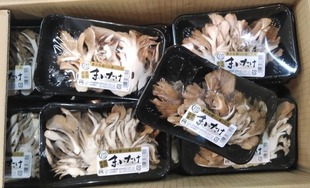
Artificial cultivation of mushrooms is said to have started from shiitake mushrooms about 300 years ago. Currently, there are about 20 types of artificially cultivated mushrooms, all of which are saprotrophic mushrooms, and mycorrhizal mushrooms such as matsutake mushrooms are said to be difficult to cultivate. Cultivation methods include log cultivation and fungal bed cultivation. Log cultivation, in which a hole is made in a log and the inoculum is planted, is a traditional method close to nature, and is mainly used for shiitake mushrooms and Pholiota nameko. Other cultivated mushrooms are grown on a fungal bed, and most of them seem to be grown on a medium that is hardened by adding a nutrient source to sawdust. Mushrooms are low in calories and rich in dietary fiber, B vitamins, vitamin D and other nutrients. In the blood of β-glucan, which enhances the immune system and is a functional component of general shiitake mushrooms, eritadenine (a type of adenosine analog, known as a potent inhibitor of S-adenosyl-L-homocysteine hydrolase (SAHH)). It is also expected to have effects that contribute to health, such as lowering cholesterol levels and blood pressure.
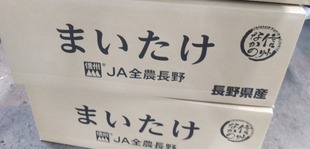
SHINSHU Nakano: As a representative of high-class mushrooms, it has been especially useful in eastern Japan. In recent years, since the artificial cultivation method has been established, it has become possible to easily enjoy its characteristic flavor and aroma.
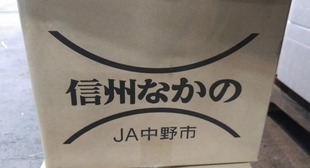
In Nagano Prefecture, the application of “Priority Measures to Prevent Spread” has ended on March 6, 2022, but the Hokushin area (Nakano City / Iiyama City, Yamanouchi Town, Shimotakai District, Kijimadaira Village, Nozawa Onsen Village, etc. Sakae Village, Shimominochi District) continues to take measures for infection alert level 5. I hope that the economic situation will recover sooner than anywhere else.
